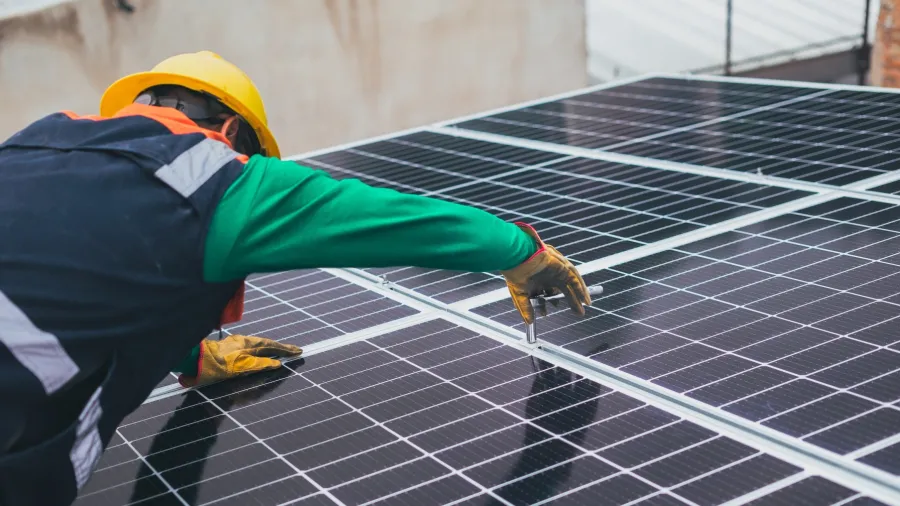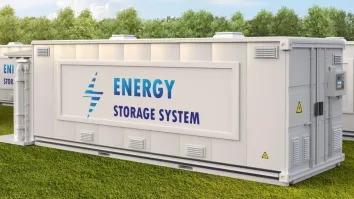
Direct PPAs should be scaled up: Asia Clean Energy Partners
But doing so poses financial risks to the operator due to the longevity of contracts.
The lack of feed-in tariffs or regular competitive auctions serves as a barrier to the clean energy transition in the region, and this can be at least partially addressed through a direct power purchase agreement (PPA).
Asian Power spoke with Asia Clean Energy Partners’ Managing Partner Peter du Pont on how DPPAs are done and why these should be scaled up in Southeast Asia in response to the lack of open access to grid generators.
Du Pont has over 30 years of experience in sustainable energy and efficiency both in the US and Asia. He is Southeast Asia Regional Coordinator for the Private Financing Advisory Network and has previously served as Senior Climate Change Advisor for the US Agency for International Development in Asia.
In a May report, Asia Clean Energy Partners found that the Asia-Pacific region is amongst the most challenging markets in the world for businesses seeking to shift to renewable energy. Is this still the case in the region and what are the remaining challenges for businesses switching to renewables?
Yes, there are continued barriers to the scale-up of renewable energy in Southeast Asia. It's not easy to get renewable energy installed in a way that you can use it on-site and also sell it to the grid. You can install solar rooftops in most countries in Southeast Asia, but you cannot always sell the excess of the solar capacity onto the grid, and this creates a problem.
In Thailand, where there's not a feed-in tariff in place for large commercial and industrial customers, there's a huge market—the “behind-the-meter” market, where solar companies come in, and they install systems, with say 300 kilowatts (KW) or 500KW of solar panels on the rooftop, and they cannot export to the grid because regulations don't allow that. They have to undersize the system, so the amount of electricity that they are producing, even at the peak time, will not be more than what they are using in the factory. If it's more than the use of the factory, they have no place to put it, so you have sub-optimal systems. The fundamental problem is the lack of a feed-in tariff or net-metering mechanism, which can allow facilities to sell electricity to the grid at a good price; and also the lack of open access to the grid for third-party solar project developers.
In Vietnam, the government is testing out something called a direct PPA, which could really unlock a lot of activity in the region. A direct PPA would allow a renewable energy developer to put in a small solar farm, sell it to the grid and wheel the power over the grid, and then somebody else could raise their hand and say, I want to buy that power. So that ability to enter into a contract with a producer of renewable energy, and to buy that power through the grid, having it wheeled through the grid, does not exist in most Southeast Asian markets. So you have a very closed market. And that's a fundamental problem—the lack of open access to the grid for generators, and therefore consumers pay higher prices for electricity.
If they can’t feed into the grid, at what point would it be economic to store excess power in batteries?
Let's say the average price that a factory in Thailand would pay for electricity is about four baht. That's about 13 cents a KW-hour. There are many project developers who can go in and put a solar rooftop onto a factory. And there are thousands of megawatts (MW) of solar rooftop PV being installed across Thailand. They put solar PV on the rooftop of a factory, shopping centre, or building. The solar electricity that the owner of the factory or the store will buy from the solar company is about two baht, which is about eight US cents a KW-hour. Meanwhile, the factory owner is paying about 4 baht per KW-hour—which is about 13 US cents per KW-hour—to the electric utility. So a solar project developer is coming in to put on a solar rooftop and the electricity that this provides is about one-third cheaper than the electricity they are getting from the grid. That's a great deal. Does it make sense to put a battery in? Generally, no. I am not aware of companies coming in and saying we're going to make a bigger system and make it twice as big and put a battery in because the economics are not there for that.
One of the biggest problems in this whole dilemma is how the Thai utilities, PEA and MEA, can continue to pay for the upgrading and maintenance of the grid, whilst they are losing load from customers who are putting in solar rooftops. The best thing that could happen is, instead of putting a battery at the site, you can allow the export of power from the solar rooftop to the grid and use the grid as a battery. So if you have that excess power from your solar rooftop, then that just goes into the grid, a feed-in tariff, or net metering process. But the reason that the Thai utilities are not accepting power exports into the grid is that they have an oversupply in most regions of the country, and they do not have a way of being compensated by customers for the value of using the grid as a battery.
What other policies should be implemented by governments in Southeast Asia to attract more investments to clean energy?
For utility-scale solar power, there's a trend away from feed-in tariffs toward competitive procurements across the region, and this is a good thing because it brings down costs.
For rooftop solar, stores and factories need to get a fair rate. In some of the customer segments, Thailand is doing net billing for rooftop PV. For some customer segments, such as the small commercial, and residential, the utilities only pay customers about 2.1 baht (about 6-7 US cents) per unit when they buy electricity from rooftop solar systems. But the utilities charge customers about 4 baht (or 13 cents) per unit for electricity that the utility sells to them. So if you have your solar on your rooftop, and you're selling it to them, you only get about half the rate for selling your electricity to the utility, compared to what the utility charges you for their electricity. That's not a good deal. There needs to be a fairer deal for the solar rooftop customer.
The rate that utilities pay to solar rooftop owners needs to be increased to make economic sense. But at the same time, it is clear that the utilities should be able to charge a reasonable fee for the service of allowing solar rooftop owners to inject electricity into the grid, and essentially use it as a battery.
What we're trying to do is just get renewable energy into the system by allowing for direct PPAs, which I described earlier. Wheeling of electricity is a common practice, and it is being implemented in other parts of the world, and it is an approach that can be tried and scaled up across the Southeast Asia region.
With regard to utility-scale solar, where companies are setting up solar farms, one of the biggest limiting factors to reducing the cost of production is the cost of capital. In Thailand, the typical cost of capital for renewable energy is in the range of 3% to 5%; in Vietnam and Indonesia, and the Philippines, it's a bit higher, at 5% to 7%. If it costs you 6% or 7% to borrow the money, then it will make a big difference in a five-year or 10-year contract, compared to someone who gets the money at 3% or 4%.
What are the risks in implementing direct PPAs?
The fundamental risk of allowing direct PPAs and wheeling is the financial health of the utility that operates the grid. The problem that the utilities are facing is that many of the utilities operating the power systems have entered into long-term contracts to get stable power, and they are typically locked into the prices in these contracts for 10 years or more.
If the electricity regulator allows direct PPAs and wheeling, then you will have new generators coming in and selling power at rates significantly lower than the utility’s current tariff. When this happens, the off-takers, the utilities who have committed to these long-term contracts, have financial risks because they've already committed and they may not be able to enter into direct PPAs at lower rates. In my view, direct PPAs are a good tool, but they should be gradually phased in.
What is the current pricing of battery storage per MW-hour that you're seeing in the market?
Actually, the fundamental challenge that utilities have is to meet demand at peak times over a relatively limited number of hours, typically hundreds of hours over the course of a year. We are increasingly seeing that it is cheaper to provide peak power using battery storage coupled with solar or wind energy, as opposed to having gas peaking plants. It's quite likely now, definitely going forward, that battery storage and solar will be more cost-effective than peaking gas plants as a way of meeting peak demand in Thailand, and many other Southeast Asian countries. If solar and storage are not more cost-effective than peaking gas now, they will be in a year or two, and it will depend upon the specific use case, such as the size of the plants and the number of peak hours you're trying to cover.
Why has the market been strong in Thailand and why hasn't it taken off in other markets such as Indonesia?
Actually, the market for solar has taken off in Vietnam, where they have installed more than 10,000MW of both utility-scale and rooftop solar over the past two years. Vietnam has a lot more solar rooftops than Thailand because there's been a government policy with a feed-in tariff for solar rooftops. Thailand's market is almost exclusively behind the meter and it has taken off because the cost of solar is one-third less than the utility tariff. There are at least 100 or more really large companies that each have scores of megawatts of solar rooftop in their portfolios, in markets such as Indonesia, Malaysia, Thailand, and Vietnam. I expect that this activity will only increase.
Thailand’s solar rooftop market is very active because the economics are so good, but it's very inefficient. The amount of solar rooftop is much smaller than it could be if you didn’t have undersized systems due to the lack of net metering. So you basically end up with having undersized systems on many factories when you could have many, properly sized systems if you had net metering. But this would put a big strain on the utilities. The markets, to the extent they're active in other countries in the region, are mostly like this, behind the meter, and this greatly limits the amount of rooftop solar getting built.
What additional pressures will be put on Asian governments that are still reliant on coal, following the COP meeting in Glasgow? There seem to be a lot of caveats to the net-zero pledges and no new coal plant pledges.
Let's separate net zero for countries versus companies. We're talking about developing countries in Southeast Asia, where the discussion around climate change is a very different discussion than for the developed countries. It's really about equity between how developed and developing countries address climate change and how quickly countries move to reach a decarbonisation target.
For example, most of the climate targets that developing countries have set are highly conditional upon financing that was pledged by developing countries as part of the Paris Agreement. That's supposed to be $100b a year by 2020 to help fund decarbonisation. If you look at the climate targets or the nationally determined contributions or NDCs, they have two targets. One is the target for what they will achieve with their own resources, and this is typically a smaller number. The other target is the amount that countries will achieve if they have international climate finance support, and this target will be many times higher.
I think developed countries have no business putting pressure on developing countries to go to net zero faster when they haven't lived up to their commitments for financing. Where's the $100b, right? You have to take care of that first.
Furthermore, the discussion should not be about net zero, it should be about net zero with development, which we call “Beyond Net Zero”. How do you meet the development needs of countries such as the Philippines, Thailand, Vietnam, Cambodia, Laos, Myanmar? How do you get people out of poverty, create good-paying jobs, and meet development objectives, including the UN Sustainable Development Goals? You can't have a net-zero discussion that doesn't take into account these broader development objectives. I think the discussion around net zero should be focused on how we can do net zero for Thailand, Indonesia, and all of these other countries in a way that meets their development objectives first and foremost.
In a January 2020 report you did with the Stockholm Environment Institute, you found that power sector investors in Southeast Asia were found to generally not consider climate-related risks in their investments. How has this situation improved?
There have been substantial shifts. That research was done by our company in cooperation with colleagues from the Stockholm Environment Institute. Back then, the story that we painted in our report was that the significant risks associated with climate change and global warming, including the physical risks and financial risks, were not the topic of much discussion amongst many investors in mainstream power generation. We found that independent power producers were at a really different level than in Europe or the United States, and did not have climate change on their radar. How have things changed? First of all, the divestment movement has made significant inroads globally. Now, there are trillions and trillions of dollars of assets that are being managed by funds and companies that have pledged to divest their investments into fossil fuels. Related to this, there’s pressure on oil and gas companies to reduce the amount they spend on oil and gas exploration. And that lack of money coming into the oil and gas companies is partially behind the energy crunch that you're seeing, in Europe and parts of the US where the gas prices and coal prices are going up. By now, the impacts of this divestment movement have reached Southeast Asia, and the impacts are flowing through the markets because investors are more aware of the risks of having stranded power generating assets in 10 or 15 years’ time.
Another reason that energy investors and project developers are more aware of climate risks is that they have seen what might happen to the limited sources of financing for coal power plants. China, Japan, and South Korea are the last major sources of financing for coal power plants. And they have all recently announced plans to stop financing coal power plants That is a huge, huge deal because it means that countries in Southeast Asia and in South Asia that are planning on building a lot of coal plants are going to have a hard time replacing that money because a lot of that would be underpinned normally by large, long term loans from these donors.
Another thing is that the economics are increasingly favouring renewables. The deflationary economics of renewable energy, where the costs are getting less and less over time, is leading more and more companies to basically shift their portfolios and to invest more into renewable energy. The oil and gas companies are getting into this space, and that's happening at a much faster rate than it was when we did the research back in 2019.



















 Advertise
Advertise






